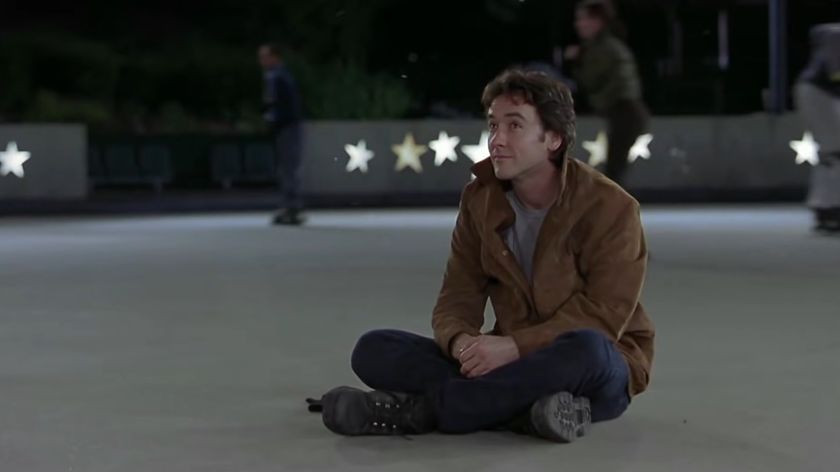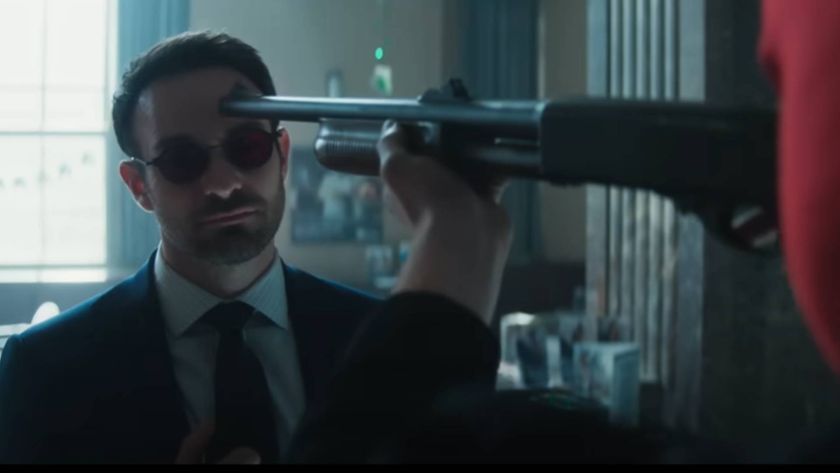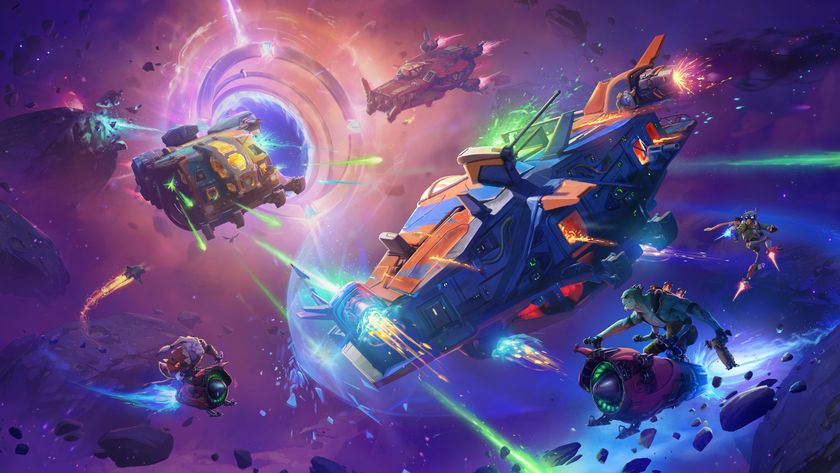The 32 greatest '90s movie characters
Slackers, hackers, and fashionable teenagers dominated the big screen in the '90s

There’s something about Mary… and other movie characters in the 1990s. In a decade characterized by the sudden rise of the internet and increasingly sophisticated consumer technology, Hollywood studio pictures maintained box office dominance while indie and foreign films penetrated homes via rental video and cable television. With great movies came equally great characters. From fashionable teenagers to calculating serial killers, from kung fu cops to fast-talking hustlers, the ‘90s had it all.
But which ‘90s movie characters actually deserve recognition as the best of all time? Time to jack into the Matrix and sign up for Fight Club. These are the greatest ‘90s movie characters ever.
32. Stifler (American Pie)

Rude, rowdy, and a riot. That’s Steven Stifler, the rambunctious jock and breakout role of late ‘90s/early ‘00s teen movie staple Seann William Scott. While in any other movie a character like Stifler would be the bully king of his high school hallways, and indeed he is still that, in American Pie Stifler still considers a bunch of dorky virgins his best friends and does all he can to help them lose their V-card before graduation. In the sequels Stifler’s antics lead him to being on the receiving end of the grossest pranks and mishaps. But in the first movie, released in 1999, Stifler is invincible with frat boy energy.
31. Ma Hon Keung (Rumble in the Bronx)

After starring in a slew of martial arts hits in Hong Kong, Jackie Chan found global fame through Rumble in the Bronx, released in 1995. In Stanley Tong’s film, Chan plays a fish-out-of-water cop from Hong Kong whose fast fists and high kicks make a mess of New York City’s street gangs. While Rumble in the Bronx is a high-octane comedy where Chan’s physicality takes priority, Keung is arguably the definitive archetype for Jackie Chan to play, that of a benevolent stranger whose kung fu skills leaves everyone else tripping over their feet.
30. Annie Wilkes (Misery)

Prescient of the 21st century’s discomforting phenomenon of pop culture obsessives with parasocial relationships towards fictional characters, Kathy Bates delivers a haunting turn as a nurse who kidnaps the author of her favorite book series to force a new ending for the final installment. Bates won an Oscar for her turn as Annie Wilkes, whose trained hospitality lures Paul Sheldon (James Caan), and indeed the audience, into a false sense of security before revealing her selfish and delusional scheme. The masterstroke of Rob Reiner’s modern gothic classic is that, in the end, we still have sympathy for Annie Wilkes. After all, don’t we all just want to have a happy ending?
29. El Mariachi (Desperado)
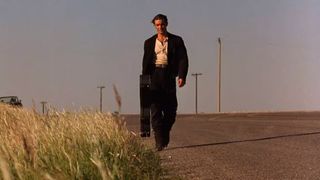
While Carlos Gallardo first played the title role of the “Mariachi” in Robert Rodriguez’s freshman film El Mariachi, movie star Antonio Banderas expanded the part with ample sex appeal and attitude in the 1995 sequel Desperado. A rogue gunslinger reminiscent of yesteryear’s Westerns, Banderas’ version of the character – who seeks retribution for the murder of his lover – exudes mystery and panache, with the actor’s own innate charisma making up for any and all shortcomings in the script. Donning an all-black ensemble and a heavyweight guitar case packing heat, the Mariachi walks like an ill omen for all who stand in his way.
28. Ghostface (Scream)

Every generation needs a slasher. The ‘70s had Michael Myers and Leatherface, the ‘80s had Freddy Krueger and Jason Voorhees – and the ‘90s had Ghostface. The knife-wielding serial killer in the famed Scream series, originally made by the late Wes Craven, was just one of many different “ghost” masks made by costume company Fun World; producer Marianne Madelana found one of them in a house during pre-production of the first film. With cooperation from Fun World, a few modifications led to what we now recognize as Ghostface, which has become one of the best-selling Halloween costumes of all time. But Ghostface is only iconic thanks to the work of Craven, whose classic 1996 film modernized the aging slasher genre with inspired subversion.
Sign up for the Total Film Newsletter
Bringing all the latest movie news, features, and reviews to your inbox
27. Ace Ventura (Ace Ventura: Pet Detective)

All righty, then! Tom Shadyac’s intentionally imbecilic Ace Ventura: Pet Detective is best remembered as a comedy exhibition for Jim Carrey at the top of his game. While other actors like Alan Rickman, Rick Moranis, and even Whoopi Goldberg were initially considered to star, it was Jim Carrey who shaped our lasting image of Ace Ventura as a rock ‘n roll agent of chaos. Everything one might remember about Ace Ventura, from his obnoxious pompadour haircut and Hawaiian shirts to even more obnoxious behavior, is all Carrey running down the field to go long. In a 1994 interview with the L.A. Times, Carrey said: "I knew this movie was going to either be something that people really went for, or it was going to ruin me completely … I wanted to be unstoppably ridiculous, and they let me go wild."
26. Marge Gunderson (Fargo)
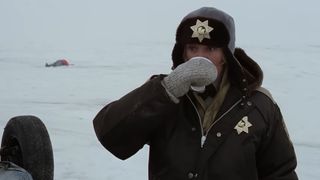
Only a Coen Brothers movie like Fargo could introduce its protagonist more than 30 minutes into its story and still give audiences a true hero to root for. In this celebrated black comedy, Frances McDormand delivers an Oscar-winning performance as Marge Gunderson, a pregnant Minnesota police chief investigating an eerie case of triple homicide in her jurisdiction. In this frozen town full of incompetence, Marge embodies warmth and capability, her humble demeanor suggesting a dutiful quest for justice – or just some explanation. She might not be the flashiest movie character of all time. But is Marge unforgettable? Yeah, you betcha.
25. John Coffey (The Green Mile)

The late Michael Clarke Duncan was nominated for an Oscar for his unforgettable role as John Coffey in Frank Darabont’s acclaimed adaptation of Stephen King’s The Green Mile. In a Louisiana prison during Prohibition, Duncan’s John Coffey is a towering giant with a gentle heart and a gift for healing, and is wrongfully accused of murdering two white girls. While on death row, John exhibits his powers to a bewildered guard (Tom Hanks), allowing the two to embark on an emotional journey together during John’s final days on Earth. John Coffey stands tall as a memorable figure of tenderness in even the most hostile of places.
24. Darth Maul (Star Wars: Episode I – The Phantom Menace)

When Star Wars was reborn in 1999 to kick off George Lucas’ prequel trilogy, The Phantom Menace introduced a frightening figure as if to say, This isn’t your daddy’s Star Wars. With a crown of devil horns, red and black skin, and piercing gold eyes, the sinister and silent Darth Maul was like a samurai villain from the underworld – a vibe that entrenched Star Wars into the extreme aesthetics of the 1990s. Played by martial artist Ray Park, Maul’s lethal quarterstaff lightsaber and ninja acrobatics made him a different threat than his “predecessor” Darth Vader. In the zeitgeist of Jackie Chan and The Matrix, Darth Maul modernized Star Wars for a new era.
23. Raoul Duke (Fear & Loathing in Las Vegas)

In Terry Gilliam’s surreal 1998 black comedy classic Fear & Loathing in Las Vegas, Johnny Depp fleshes out the semi-fictional narrator originating in Hunter S. Thompson’s seminal 1971 semi-autobiographical novel. In what was supposed to be Thompson reporting on a motorcycle race for Rolling Stone, Thompson instead delivered a manic dirge for the failed promises of the 1960s. In Gilliam’s film version, the chameleonic Johnny Depp dons the gaudy Hawaiian shirts and aviator shades of Thompson, who roams Las Vegas in a haze of hallucinogens. Second to Jack Sparrow, “Raoul Duke” (a pseudonym adopted by Thompson) may be Depp’s most recognizable role and a staple Halloween costume for almost every college film major.
22. Catherine Tramell (Basic Instinct)

Any notoriety associated with Paul Verhoeven’s 1992 erotic thriller Basic Instinct is due to Sharon Stone, who captivates as neo femme fatale Catherine Tramell. A wealthy heiress and novelist, Catherine is a textbook narcissist who knows her body is deadly like a sharpened knife. Through unbroken eye contact and her now iconic form-fitting snow white dress – which betrays the pitch black heart housed in her smooth shell – she leaves men sweating puddles, which is all a smokescreen to hide her own grisly crimes. While Verhoeven’s film was not popular upon release, it has undergone reevaluation as a modern classic. With just a switch of her crossed legs, Catherine Tramell redrew the boundaries of sexuality in mainstream movies.
21. The Iron Giant (The Iron Giant)

“I am not a gun.” At first glance, the “Iron Giant” is an ultra-cool war machine straight out of a comic book. But in Brad Bird’s touching 1999 animated classic, the title character of The Iron Giant (voiced by Vin Diesel) seeks to be more than a weapon of destruction. In this beautifully rendered 1950s period piece, which pays homage to pulp sci-fi and Silver Age comics, a giant robot from outer space lands on Earth and befriends a nine-year-old boy. Beneath the heavy artillery is a soul to be found, and armed with a sympathetic Vin Diesel, The Iron Giant teaches all of us that whatever our purpose may be, it does not dictate our existence.
20. Cher Horowitz (Clueless)

She made yellow plaid forever a fashion statement, and “As if!” the rallying cry of a generation. Alicia Silverstone rose to Hollywood fame through Clueless, Amy Heckerling’s lively coming-of-age teen comedy and retelling of Jane Austen’s Emma in contemporary Beverly Hills. While she’s dressed head to toe in prep school chic and/or luxury athleisure, Cher is more than her superficial looks. Unlike her successors the Plastics (from Mean Girls), Cher knows the spiritual benefits of doing good deeds even if they mostly amount to giving other people makeovers. Cher isn’t perfect, but as a ‘90s movie character, Cher is flawless, and undoubtedly many young people’s introduction to how to make what they wear reflect how they feel inside.
19. Blake (Glengarry Glen Ross)

Alec Baldwin only has eight minutes of screen time in James Foley’s Glengarry Glen Ross, an adaptation of David Mamet’s award-winning stage play. But Baldwin’s brief appearance permeates for the rest of the film like an atom bomb. Through a verbally incendiary monologue about how only winners deserve to reap any benefits in life, Baldwin’s character (simply named “Blake”) kicks an entire office of salesmen in the rear to make them compete for their own livelihood. Predating social media ghouls who spew the virtues of hustle culture, Blake’s polemic about prosperity through self-annihilation can almost make you smell the nicotine in his breath. While only Al Pacino was recognized by the Academy to give him a Best Supporting Actor nomination, it’s “Blake” that people remember why “coffee's for closers.”
18. Mona Lisa Vito (My Cousin Vinny)

Fashionable and passionate, Marisa Tomei is a pistol of a woman in Jonathan Lynn’s enduring 1992 comedy My Cousin Vinny. While on paper she’s only the fiance of Joe Peschi’s Vinny Gambini, Mona Lisa Vito soars above everyone else to become the movie’s real show-stopper, a feisty second generation Italian-American woman who proudly contrasts with the movie’s primary rural Alabaman settings. Tomei rightfully won an Oscar for her performance, portraying a fully realized individual who is more than surface-level stereotypes of east coast Italians.
17. Candyman (Candyman)

Candyman… Candyman… Candyman… Candyman… Candyman. See anyone in the mirror? In Bernard Rose’s film adaptation of Clive Barker’s short story, chanting the name of “Candyman” (played by Tony Todd) summons the vengeful spirit of a 19th century Black man who was lynched for having a love affair with a white woman. An avatar of the evils forged in the fires of racism and classicism in the United States, Candyman lives up to the horror genre’s spirit as an invitation for audiences to explore tragic political realities through the safety of the supernatural. Brought to life by Tony Todd, Candyman is haunted as he is handsome, a distinction that separates him from other scarred slasher icons.
16. “Tequila” Yuen (Hard Boiled)

If John McClane was the greatest action hero cop of the ‘80s, his successor of the ‘90s is easily “Tequila” Yuen, played by the fiercely cool Chow Yun-fat. In John Woo’s heroic bloodshed classic Hard Boiled, Chow Yun-fat stars as a hard-drinking, jazz-loving sergeant of the Hong Kong police who clashes with his superiors over his reckless methods and stubborn defiance of orders. His preferred armaments – two pistols, one in each hand – transform him into something of an artist, a painter who splatters walls with the blood of his underworld enemies. While Tequila may not be as revered as McClane, these two rogue cops know what it’s like to mow down bad guys and jump out of buildings. But only one of them did it with a baby in their arms.
15. Alexander Dane (Galaxy Quest)

If you’ve ever been to a comic book convention and saw a has-been selling autographs, you’ve seen Alexander Dane. Played with deep sincerity by the late, great Alan Rickman, Alexander Dane is a Shakespearean actor who feels defeated by the fact he will only be remembered for Galaxy Quest, a fictional sci-fi show in the vein of Star Trek. While Rickman’s role is only one part of a larger ensemble (who are all TV actors whisked away to space by a real aliens who need their help), it’s his labored reciting of his own cringe-inducing catchphrases – “By Grabthar’s Hammer, I will avenge you!” – that makes him the reason why anyone should always tune in to Galaxy Quest.
14. Clarice Starling and Hannibal Lecter (The Silence of the Lambs)

While FBI trainee Clarice Starling (Jodie Foster) and imprisoned killer Hannibal Lecter (Anthony Hopkins) are obviously different characters, their stories are so intertwined it’s hard to split them apart. In Jonathan Demme’s unrivaled thriller The Silence of the Lambs, Clarice and Hannibal are two very intelligent individuals “working” together on a case to track down another killer, though Demme’s film makes it unclear who is actually in control. While Clarice is resolute and determined to uphold justice, she is forever changed by the darkness within Hannibal. Both Foster and Hopkins deliver some of the finest work ever in their careers, all while standing on opposite sides of prison bars and plexiglass.
13. The Dude (The Big Lebowski)

The patron saint of chillaxing who knows what it means for a rug to tie a room together, Jeff Bridges’ infamous “The Dude” is one of those movie characters who came out of nowhere and now no one can remember a time before him. Loosely based on a real-life friend of writers/directors Joel and Ethan Coen, The Dude struts around town in nothing but a bathrobe and white Hanes t-shirts; he looks as if you can almost smell him a mile away. In the Coen Brothers’ celebrated comedy, The Dude represents the virtues of maintaining a carefree composure in the midst of a needlessly complicated universe.
12. Kevin McCallister (Home Alone)
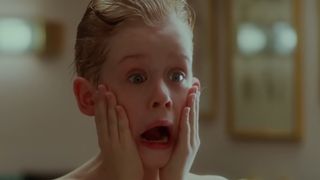
What if Rambo were tiny? That’s the basic idea underlying the stranded hero of Chris Columbus’ Christmas classic Home Alone. Played by then-child actor Macaulay Culkin, Kevin McCallister is the frustrated youngest sibling of the McCallister clan who gets his Christmas wish to be left alone. While Kevin enjoys freedom of having a whole house all to himself, he soon realizes what it means to be part of a family. His love for them inspires his ingenuity to defend their home – with freakish sadism – from a pair of thieving invaders. When it comes time to protect what matters most to us, may we all take a page from Kevin’s book.
11. Tracy Flick (Election)

We all know a Tracy Flick in our lives. If you don’t, maybe you might be Tracy Flick. Originating from Tom Perrotta’s 1998 novel Election and brought to the screen by Reese Witherspoon in the 1999 film version (directed by Alexander Payne), Tracy Flick is an intelligent and ambitious high school student whose hyper-driven focus to win a school election repels anyone from being her friend. In the years since Witherspoon’s remarkable performance, “Tracy Flick” has become shorthand for any go-getter and girl bosses who don’t necessarily inspire others to follow her, but subject them to do so.
10. Genie (Aladdin)

The magic of Genie, from Disney’s animated smash hit Aladdin, was and is Robin Williams. After casting the comedy titan, the producers realized no one can write for Robin Williams. In an unusual approach by Disney for its animated features, the voice-over directors invited Williams to do what he does best in the booth – improvise over the script – so they could animate with options. What they got was hours of pure uncut genius, with Williams going whole hog as an omnipotent magical force unbound by reality. While only drips of the unused takes have made their way online over the years, what was actually used in the final cut of the movie ensures that Williams’ Genie is one of the best characters in movies of all time, animated or not.
9. Henry Hill (Goodfellas)

If every generation should have a defining cinematic mobster, the ‘90s have Henry Hill, played by Ray Liotta. Based on the real-life figure associated with the Lucchese crime family, Liotta imbues the part with good looks and endearing charm, especially as a man who starts off a life of crime with endless promise only to end up neck-deep in trouble. Through unmatched direction by Martin Scorsese, Henry Hill’s story is that of a great American tragic-comedy, the rise and fall of a made man who ends up so far from where he intended to be.
8. Wayne & Garth (Wayne’s World), Jay & Silent Bob (Clerks), and Lloyd & Harry (Dumb & Dumber)

Starting with Bill & Ted’s Excellent Adventure in 1989, the ‘90s became bizarrely inundated with dimwit duos to fill a decade with hilarious friendships.
In Wayne’s World, based on the Saturday Night Live sketches, Mike Myers and Dana Carvey represent the grunge era as two wannabe rockers who host a public access TV show from their mom’s basement. In Clerks, New Jersey homies Jay and Silent Bob (Jason Mews and writer/director Kevin Smith) hang outside of a convenience store all day, selling illegal goods and giving out sage wisdom for free. In Dumb & Dumber, Jim Carrey and Jeff Daniels play two best friends from Rhode Island who hit the road to Colorado on a mission to win over a married woman. There’s just something about the 1990s that encouraged the dumbest people you know to stick together, no matter what life threw at them.
7. Austin Powers and Dr. Evil (Austin Powers: International Man of Mystery)

When Mike Myers’ father died in 1991, the comedy star realized how much his taste in 1960s pop culture influenced his own. In 1997, Myers paid tribute to dear dad by writing and starring in Austin Powers: International Man of Mystery (directed by Jay Roach). An earnest satire of spy-fi heroes like James Bond, Austin Powers, is conventionally ugly – rotten teeth, a bushy chest, a flabby physique – but his bold confidence in himself make him a magnet for all the honeys. Meanwhile, Myers plays double duty as the scarred and inept mastermind Dr. Evil, whose quotes have become some of the internet’s most popular memes.
6. Vivian Ward (Pretty Woman)
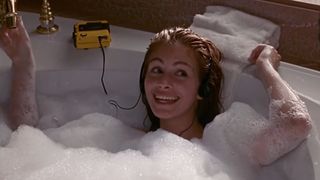
It’s the picture that launched Julia Roberts to worldwide fame to become the decade’s defining movie star. In Garry Marshall’s timeless romantic comedy from 1990, Roberts plays Vivian Ward, a sex worker with a heart of gold who is whisked away by an affluent businessman (Richard Gere). With Roberts’ unique magnetism and made-for-Hollywood beauty, Vivian feels alive as a woman with all sorts of hopes and dreams for herself, all the while refusing to let the nature of her work define her worth.
5. Neo (The Matrix)

Do you know kung fu? At the dawn of the 21st century, the Wachowski siblings sent everyone flying with The Matrix, a game-changing sci-fi classic. At the center of its story about an otherworldly revolution against a race of machines is Keanu Reeves, in the role of a stoic hacker named “Neo.” While Neo is emotionally detached and reserved, his journey from lowly desk goon to the Christ-like destined hero of mankind’s rebellion is inspiring as it is exciting. For better or for worse, Neo’s sick leather trench coat and sunglasses redefined what “cool” looks like on the big screen for some time, at least until the more colorful superheroes came along.
4. John Doe (Seven)

Even now, we don’t really know a thing about Kevin Spacey’s John Doe. That’s what makes him so disturbing and unforgettable. He’s a man from nowhere, possibly from anywhere. He could be on the same bus, or the next table over at a restaurant. Yet his capacity for evil is horrifying to fathom. In David Fincher’s enthralling psychological thriller, Spacey’s nihilist serial killer conducts a series of murders based on the Biblical Seven Deadly Sins, with his master plan ultimately being his own grand exit. Characterized by unusual poise and a bleak view of the world, John Doe is a character fitting for the ‘90s: dark, foreboding, and difficult to explain. How appropriate for the years that followed.
3. Tyler Durden (Fight Club)

It’s because of Brad Pitt that we know all the rules of Fight Club. In David Fincher’s enduring social satire and crime drama, Brad Pitt memorably plays the enigmatic Tyler Durden, a new friend of Edward Norton’s nameless protagonist who turns his humdrum life upside down. (Yeah, there’s obviously more to that story, but we’ll leave out the spoilers for those who’ve still not had their fight night at Fight Club.) As Tyler Durden himself puts it in the film, he is all that modern men hope to look and act like. While the actual point of Fincher’s films is that he shouldn’t be, that hasn’t stopped legions of men from thinking just that.
2. Dr. Sean Maguire (Good Will Hunting)

When five other therapists fail to crack the brilliant and troubled soul of Will Hunter (Matt Damon), there is world-weary Dr. Sean Maguire, played by Robin Williams in an Oscar-winning performance. A Vietnam War veteran still reeling from the death of his wife, Dr. Maguire becomes the perfect court-ordered therapist for Will, a 20-year-old janitor with genius intellect. In one of his most celebrated dramatic roles, Williams is warm but stern, inviting but not a pushover. Being an entity Will finds is worthy of respect, the two men discover in each other the means to live life by their own terms without regrets. Through tender direction by Gus Van Sant, Williams’ Dr. Maguire is someone who taught us all what it means to go see about a girl.
1. Jules Winnfield and Vincent Vega (Pulp Fiction)
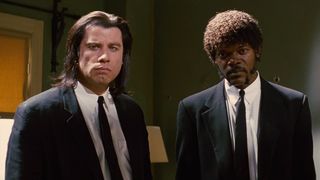
L.A. hitmen Jules Winnfield (Samuel L. Jackson) and Vincent Vega (John Travolta) are inseparable and absorbing in Quentin Tarantino’s untouchable 1994 hit Pulp Fiction. Played by a resurgent John Travolta and a thunderous Samuel L. Jackson (whose career was never the same after this movie), both men enter the annals of cinema's greatest antiheroes to the funky tune of "Jungle Boogie," with Jules in particular boasting bracing Blaxploitation energy; just see him ham up the melodrama of his epic Ezekiel 25:17 recitation. But as much destruction these men cause in Pulp Fiction, they end the story quite calmly through intense conversation. That's how you end a movie: Not with a bang, but with a last sip of coffee and your wallet back in your pocket.

Eric Francisco is a freelance entertainment journalist and graduate of Rutgers University. If a movie or TV show has superheroes, spaceships, kung fu, or John Cena, he's your guy to make sense of it. A former senior writer at Inverse, his byline has also appeared at Vulture, The Daily Beast, Observer, and The Mary Sue. You can find him screaming at Devils hockey games or dodging enemy fire in Call of Duty: Warzone.











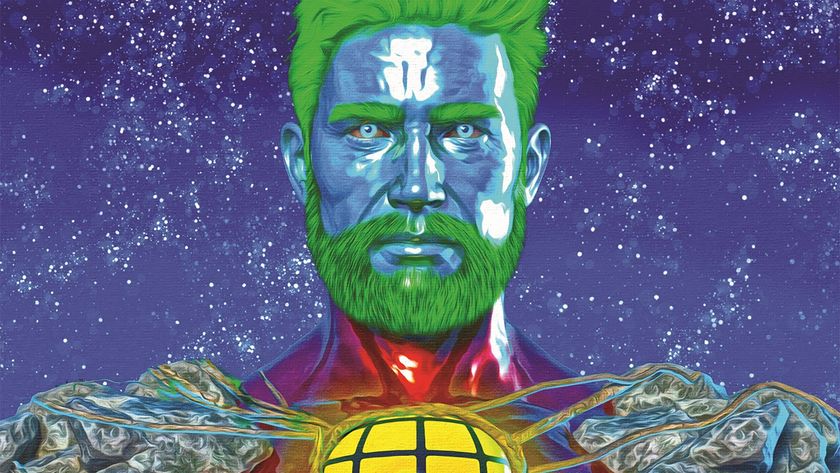

The OG Fox X-Men are back, with Patrick Stewart, Ian McKellen, and more joining the cast of Avengers: Doomsday alongside a whole new Avengers team to take on Robert Downey Jr's Doctor Doom

Sue Storm and Namor are officially both in Avengers: Doomsday, and fans are wondering if Reed Richards has something to worry about





